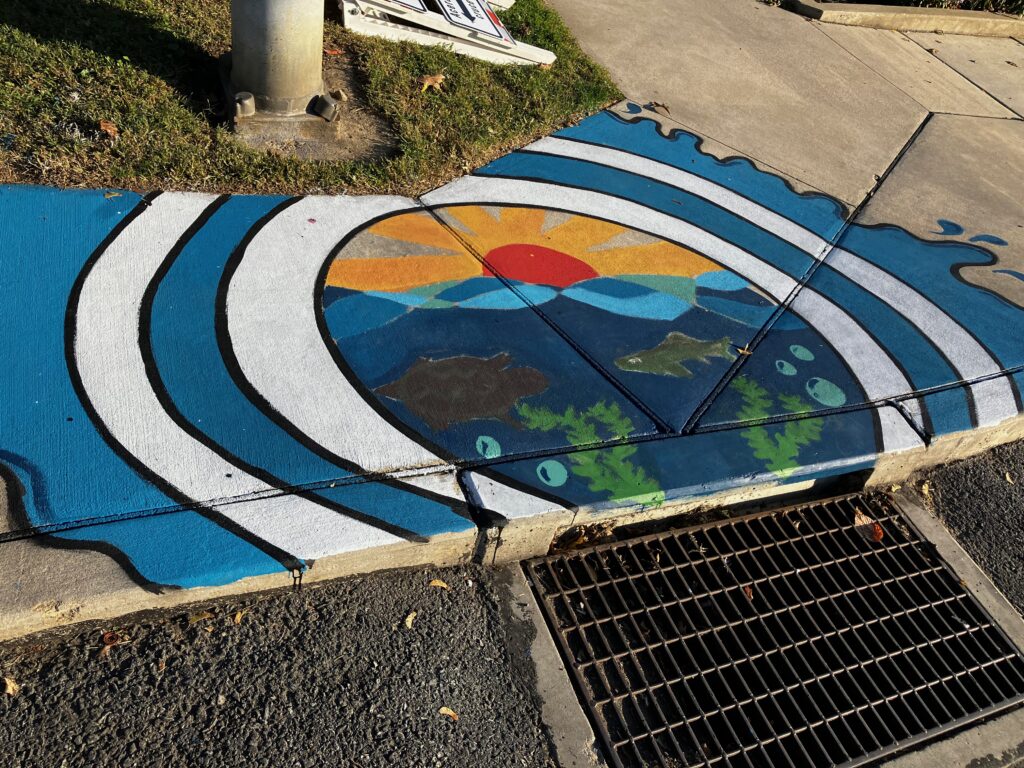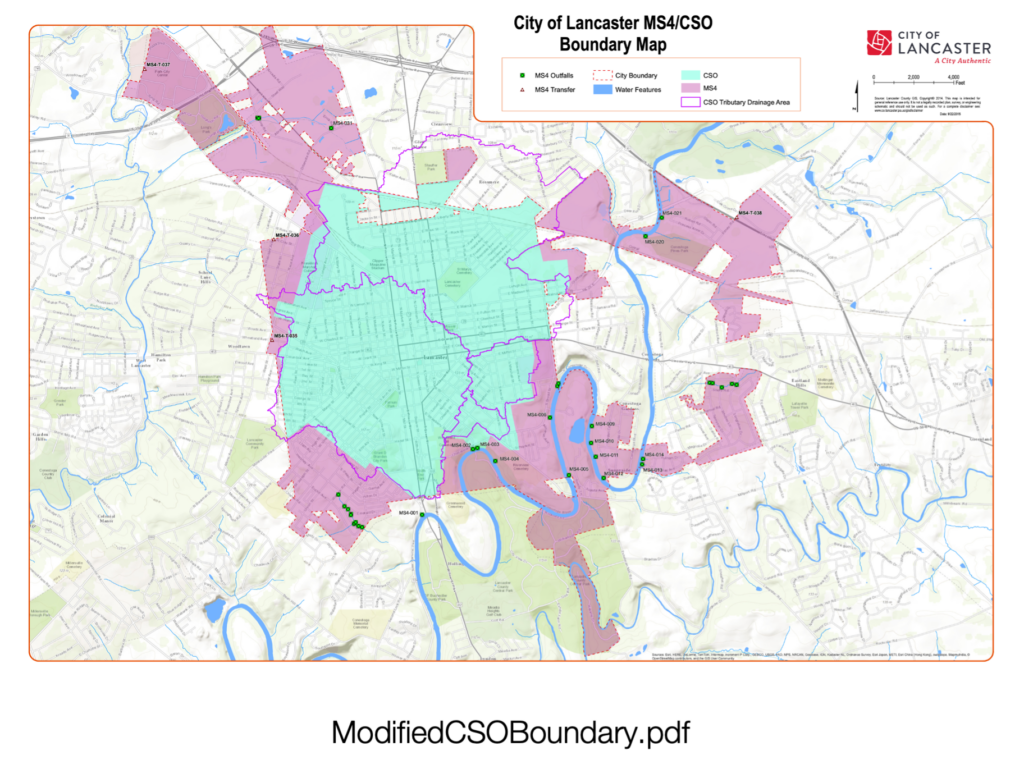STORMWATER MANAGEMENT
The proper management of stormwater helps protect Lancaster’s residents, property and local waterways. The City of Lancaster is recognized as a leader in sustainable stormwater management at the international, national, state, and local levels.
What is Stormwater Runoff?
Stormwater runoff is rain, snowmelt or other precipitation that runs off surfaces such as rooftops, streets, sidewalks, and even compacted ground surfaces. Stormwater runoff flows directly into our sewer system or streams and can contribute to localized flooding. Stormwater runoff is that portion of the precipitation that doesn’t evaporate or infiltrate into the ground.
In natural/undeveloped environments, such as forests, roughly 10% of the stormwater that falls on the ground runs off the land into local waterways. The rest evaporates or infiltrates into the ground. In an urban/developed environment such as Lancaster, evaporation and infiltration are reduced and a higher percentage of stormwater becomes runoff, flowing off the land and into the City’s combined sewer system or directly into local waterways.

As it flows over the land, stormwater runoff picks up pollutants such as dirt/sediment, automotive fluids, lawn fertilizers, pesticides, pet waste (and viruses and bacteria), and litter, including cigarette butts. These pollutants are carried into the City’s Combined Sewer System, where they must be mechanically screened out. This increases the cost of operating our Advanced Wastewater Treatment Plant and can contribute to Combined Sewer Overflows. In the MS4 area, the pollutants are transported directly to local waterways. These pollutants have many negative impacts on streams and rivers, including the Chesapeake Bay.
When It Rains
When it rains, stormwater either evaporates, soaks into the ground, or runs off impervious surfaces such as roofs, sidewalks, parking lots, and streets into stormwater inlets like the one pictured here. But where does that water go?

Most of Lancaster’s stormwater runoff flows into a Combined Sewer System (CSS). In a Combined Sewer System, both domestic sewage from homes and businesses, and stormwater flow through a single system of pipes to the Advanced Wastewater Treatment Plant, where it is treated before being discharged to the Conestoga River.
Combined sewer systems are common in historic cities like Lancaster. Most of the time the system works fine. However, there are times when the system becomes overwhelmed, and sewage and rainwater are discharged directly into the Conestoga River. This is called a Combined Sewer Overflow or CSO.
Combined sewer overflows (CSOs) impact local water quality, limiting our ability to enjoy the river as a recreational asset. Lancaster is required by law to reduce the frequency and volume of CSOs. To learn more about the Combined Sewer System and what the City of Lancaster is doing to reduce the impact of our Combined Sewer System on the Conestoga River, visit engage.cityoflancasterpa.gov/en/projects/cso-control-plan.
In parts of Lancaster without a Combined Sewer System (shown in purple on the map), stormwater flows into a Municipal Separate Storm Sewer System (MS4), which discharges directly into our surrounding creeks and rivers untreated.
All stormwater pollution, regardless of its source, is harmful to fish and other aquatic life and habitats, and can make recreational areas unsafe and unpleasant. The impacts of stormwater pollution stretch from the Conestoga River and Little Conestoga Creek all the way to the Chesapeake Bay.
Take Action
As it runs over the land, stormwater “runoff” picks up trash, chemicals, fertilizers, oils, and dirt/sediment, which can clog stormwater inlets causing localized flooding, and polluting our rivers and streams.
You can help reduce stormwater pollution:
Organize a litter cleanup. Apply for a Love Your Block Grant and make a party of it!
Make sure to move your car for the Street Sweeper. The “sweeper” doesn’t just sweep, it vacuums too, keeping litter and other debris out of our sewer system, river, and streams.
Help soak it up! Observe how stormwater runs off your property and find ways to soak it up, then apply for a Stormwater Residential Grant to make it happen.
Plant trees and other native plants to increase evaporation.
City of Lancaster – A Leader in Sustainable Stormwater Management
Since beginning its green infrastructure program in 2010, the City has installed many Green Infrastructure projects. Together these sustainable stormwater management projects reduce the amount of untreated stormwater that reaches local waterways; reduce the amount of combined sewage and stormwater that must be treated at the Advanced Wastewater Treatment Plant; and reduce the incidence of Combined Sewer Overflows. See the Map of Green Infrastructure to find installations near you!

